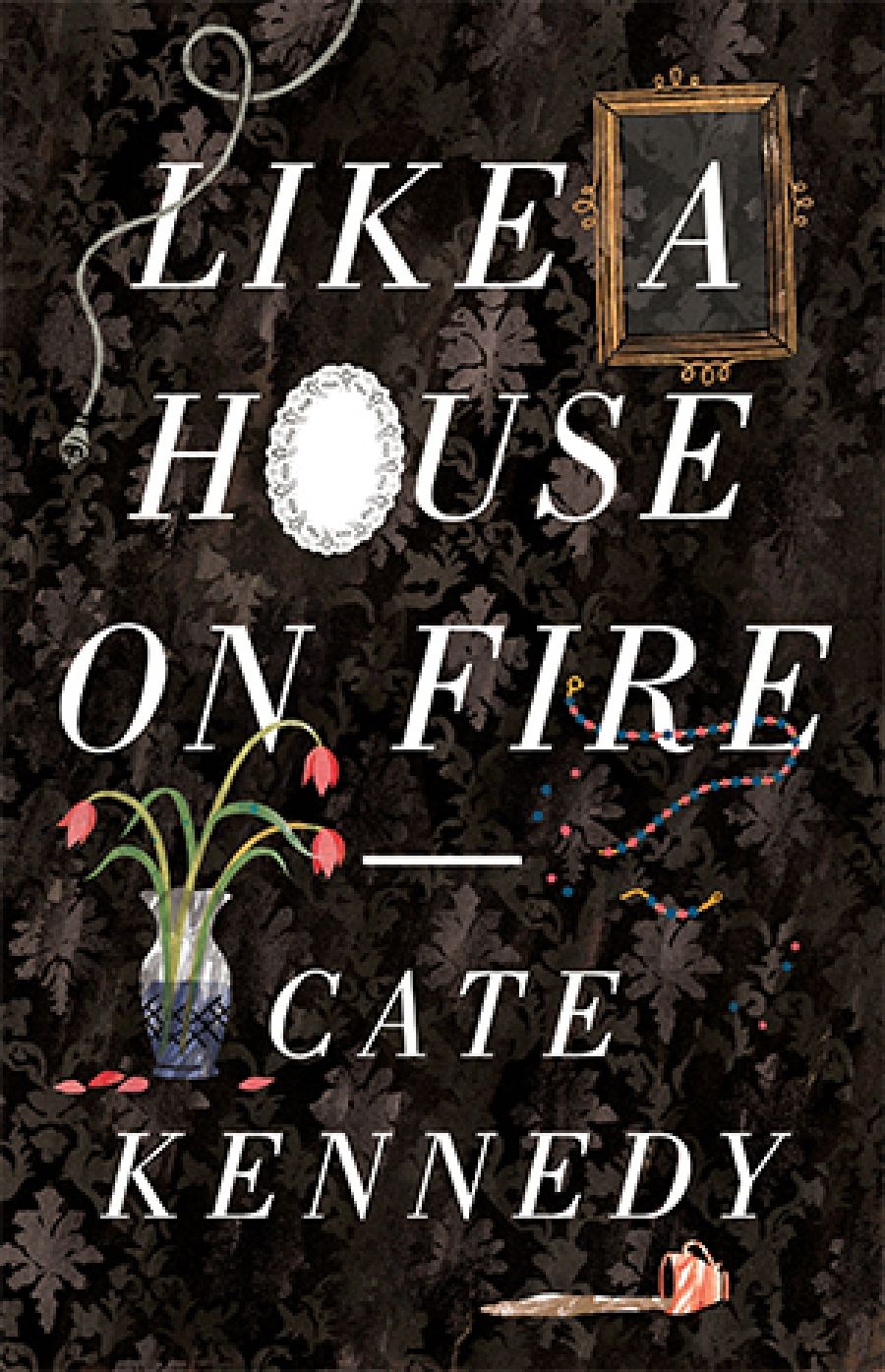
- Free Article: No
- Contents Category: Fiction
- Review Article: Yes
- Online Only: No
- Custom Highlight Text:
Cate Kennedy’s fine second collection of short stories, Like a House on Fire, is of a determinedly realist bent. Metafictional play does not generally form part of Kennedy’s armoury, and the mostly low-rent settings and struggling characters reprise what in the 1980s and early 1990s was briefly known as dirty realism, though Kennedy’s prose is not as resolutely spare as that of some writers associated with that movement.
- Book 1 Title: Like a House on Fire
- Book 1 Biblio: Scribe, $27.95 pb, 277 pp, 9781922070067
In style and subject matter, Kennedy’s new book is a continuation of her acclaimed first collection, Dark Roots (2006). With slightly fewer stories – fifteen, compared to seventeen – it is nevertheless a fatter collection, thanks in part to the format but also to some offerings being of greater length. Most of the stories in Dark Roots had won or been shortlisted in national competitions. Such was Kennedy’s strike rate for her deftly crafted and often poignant stories that, after yet another win, one writer friend of this reviewer noted, resignedly, ‘It’s Cate Kennedy. Again.’ Competitions and, for that matter, literary journals being what they are, those stories were mostly around 3000 words. Many in this second collection are similar in length, but as a more established writer who also has a novel, three collections of poetry, and a memoir behind her, Kennedy has occasionally granted herself legroom to write more extended pieces. The superb final story, ‘Seventy-two Derwents’, is the prime example.
The opening story explores the consequences of a rural accident. The unsociable Frank Slovak survives, but will never work his farm again. While recording in part the reactions of Frank’s community, it is his dutiful, unnamed wife, dealing with the town’s casual misogyny and with marriage to a man metaphorically and, now, literally unbending, who is at the centre of this finely wrought story. The collection’s title story also deals with the aftermath of a workplace injury. The protagonist this time is a more sympathetic male, whose back injury renders him not only unable to work, but also a bystander to preparations for Christmas.
A number of other stories deal with the mundane and lowly nature of work, or its lack. In ‘Laminex and Mirrors’, a young woman takes a job as a hospital cleaner, shrugging off the stringent organisational hierarchy and banality of much of her work – including cleaning a bathroom on a wing scheduled for demolition – in order to wheel a dying yet engaging elderly patient out into the hospital grounds against all institutional rules. ‘Sleepers’ deals with a perennial loser who can find only menial, part-time work, whose partner has left him, and who, as a ‘liability, not a catch’, has few prospects of improving himself in either employment or romance. ‘Little plastic shipwreck’ follows an attendant who is asked to freeze and chop up a dead dolphin in the desultory marine amusement park where he works. Some of these stories are stronger than others. The community artists in ‘White Spirit’ are as two-dimensional as the multicultural mural they have been commissioned to paint. In ‘Cake’, a woman desperately longs for her baby upon return from maternity leave. Here, Kennedy effectively conjures the forced cheer of office camaraderie, but the character’s inability to articulate her feelings or needs – a trait dogging many of Kennedy’s characters – seems unduly stretched.
Longing also runs its course through ‘Cross-country’. The protagonist searches for her former partner on the Internet, hoping and, in turn, plotting for a casual reacquaintance. Few if any of Kennedy’s characters are fulfilled, and this grants her fiction its tension and drive. They are aspirational, but in a more silently desperate sense of that word than politicians imply. They long for what they do not have, or are burdened with uncertainty regarding the value of what they have. The story ‘Static’ brilliantly shows both states at play, with a successful career woman desperate to become pregnant, and her husband unsure not only about fatherhood but also about the materially comfortable life he leads with a woman for whom he feels ambivalence.
Kennedy’s masterful use of simile is evident throughout. In ‘Tender’ a doctor feels for a lump in a woman’s body while ‘gazing into the distance like someone solving a mental problem’. Since the death of his father, the protagonist in ‘Ashes’ encounters ‘small reminders everywhere, set like mousetraps ready to snap’. Humour, less frequent, is effective when it is used: ‘He just has to keep his mood on the good side of surliness’ (‘Ashes’).
Two stories told from the point of view of a child deserve mention. ‘Whirlpool’ is a marvellous evocation of an Australian childhood from the late 1960s or 1970s, the gentle father ‘a peripheral shadowy shape, stretched thin’, the mother with a ‘tenderness felt as treacherous and irresistible as a tide, something you leaned into, hypnotised, as it tugged you off your feet’. In ‘Seventy-two Derwents’, the child’s compelling, diary-like narration traces the arrival of her mother’s new love interest – manipulative and quietly threatening – juxtaposed with the sanctuary offered by a teacher. Such a scenario could easily descend into caricature and cliché, but as with so many of Kennedy’s stories, subtle, insightful renderings of character achieve great poignancy.
When names are attached to the next cluster of literary prizes, figuring among them will quite likely, deservedly, be Cate Kennedy. Again.


Comments powered by CComment